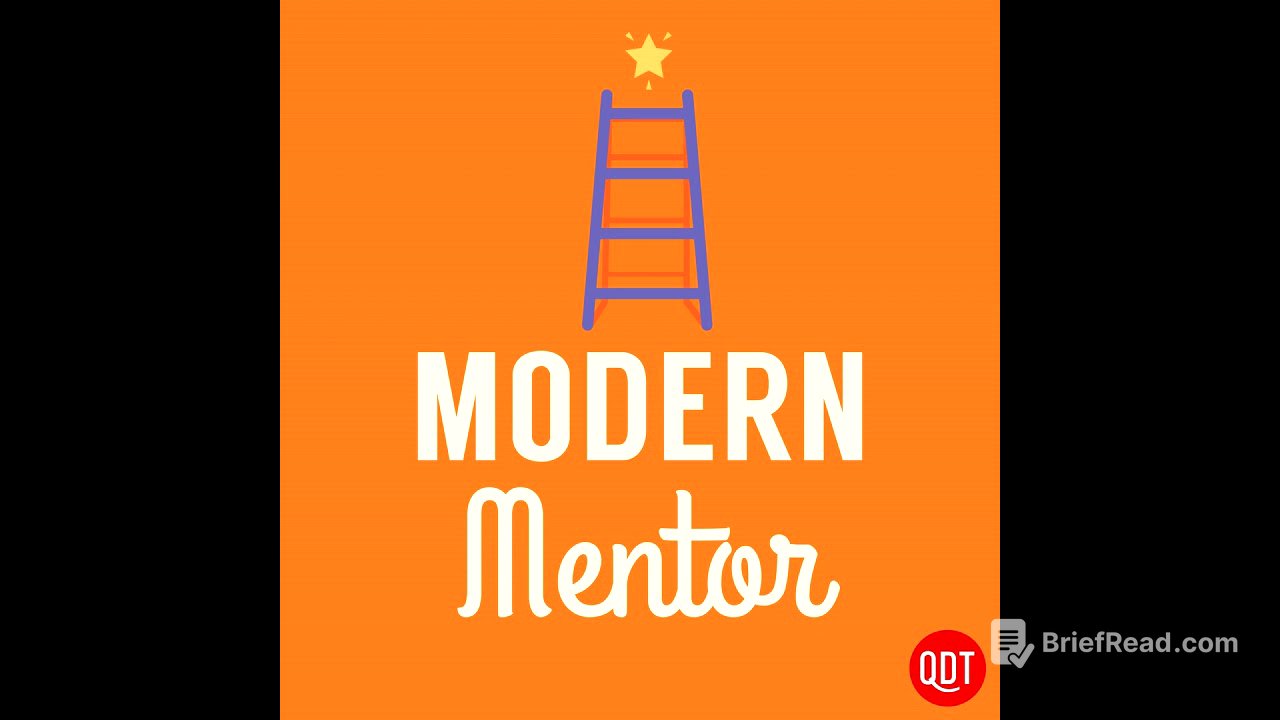TLDR;
This episode of Modern Mentor discusses how to manage team friction through work design, focusing on four key domains: clarity, coordination, challenge, and commitment. It provides a practical exercise for teams to identify breakdowns, build solutions, and create a shared operating charter to improve relationships and results. The goal is to achieve incremental improvements designed by and for the team.
- Four domains of teamwork: clarity, coordination, challenge, and commitment.
- Practical exercise for teams to identify breakdowns and build solutions.
- Importance of creating a shared operating charter.
Introduction [0:18]
Rachel Cook introduces the topic of managing team friction through work design. She uses an exercise where listeners assign emojis to their colleagues to illustrate the range of experiences people have working together. The core idea is that while it's normal to have friction, it's essential to work through it to improve team performance. The discussion focuses on making changes to how the team operates within the existing work structure to address underlying issues.
Four Domains of Teamwork [2:27]
Rachel introduces four domains of teamwork: clarity, coordination, challenge, and commitment, using them as diagnostic and design tools to address team friction. Clarity involves ensuring everyone shares the same understanding of priorities, roles, and success metrics to avoid duplication and delays. Coordination focuses on how work moves across the team to prevent dropped handoffs and missed dependencies. Challenge pertains to how disagreements and feedback are handled constructively to avoid festering issues and toxic conflicts. Commitment involves following through on promises and holding each other accountable to maintain trust and ensure deadlines are met.
Putting the Domains into Action [4:23]
To put the four domains into action, Rachel suggests a team exercise that begins with individual reflection. Each team member assesses when the team excelled or fell short in each domain, identifies helpful behaviors from peers, and commits to improving one of their own habits. The next step involves diagnosing issues together, one domain at a time, to compare perspectives and identify patterns in a safe space. The goal is to build a shared understanding of what's working and what's not, without assigning blame.
Building Domain-Specific Solutions [5:38]
For each domain, the team should agree on one or two observable norms, focusing on specific, doable actions rather than philosophical ideas. Examples include holding a 15-minute cross-team kickoff for every shared project, raising concerns within 48 hours with a proposed solution, and tracking personal commitments in a shared document. These norms should be designed around deliverables rather than difficult personalities.
Testing and Committing to Solutions [6:27]
The team should test the proposed norms against breakdown examples from the initial reflection to ensure they would have prevented the problems. If not, the norms should be refined. Finally, the team should commit to the norms, document them in a one-page operating charter, and decide when to review the charter to ensure the agreements stay relevant. The four domains serve as a framework for designing how a team works together, moving from vague frustrations to specific shared agreements.









